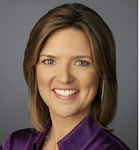Denver's Rocky Mountain News has been put to bed for the last time. The 150 year old newspaper printed their final edition today. Many other newspapers face bankruptcies and layoffs. "Dead tree media" is feeling the pains of a recession and new technology. CNN's David Bohrman spoke with The Miami Herald while he was in Florida at the We Media conference. Below are excerpts from the article where he warns that TV news needs to change the way that they do business... or else.

TV news must embrace new media, CNN exec warns, Using the Internet and social-networking sites is essential to the survival of television news, a CNN senior vice president told a media conference in Miami.
The fact sends chills down television reporters' spines even as they compulsively repeat it: Last year, earthquakes in Japan, China, Los Angeles and San Francisco were first reported not on TV but on the Internet's Twitter social-networking site.
''It tells you something about the far-reaching tentacles of Twitter and Facebook and the other social-networking sites,'' muses David Bohrman, CNN's Washington bureau chief and senior vice president. ``And it tells you something about some of the challenges facing TV news.''
Amid the daily obituaries for the newspaper business, where bankruptcies and layoffs have become a grim daily routine, there's been comparatively little notice that television news confronts many of the same problems: declining audiences, aging demographics, fierce competition from new digital media and a broken business model.
''Everything needs to be deconstructed,'' Bohrman says. ``Everything is going to be changing.''
Bohrman told The Miami Herald that he's skeptical of most of the worst-case scenarios, including the collapse of local news. ''Local newscasts, when they're good, are the centerpiece at most stations,'' he argues. ``And I think that there's a largely untapped mother lode of hyper-local information that stations can use to good effect. You want to know if that road two blocks over is under repair, if you'll be able to get to Safeway or not. I'm intrigued by that. I don't see anyone seriously accessing it yet, but someone will.''
Even so, Bohrman acknowledges these are tumultuous times for television news. One sign, he says, was the way cable-news nets took over most of the heavy lifting during last year's presidential campaign.
''I think we did 30 primary nights last year, wall-to-wall coverage for each one,'' he says. ``The broadcast networks did something on Super Tuesday, and they had some little cut-ins into their regular programming a few nights, but mostly viewers had to turn to cable for that coverage. And they did. We did some great ratings last year.''
And along the way, he says, there were some great lessons about how television news can attract that elusive younger audience. One of the most profound: Instead of keeping the new digital media at arm's length, television should embrace them.
CNN has led the way, he says, with its sponsorship of two presidential-primary debates in which the questions were asked not by reporters but by viewers who submitted their own videos to YouTube. Result: a 2,200 percent jump in viewers aged 18 to 34.
''We had 407,000 viewers in that demo for the first YouTube debate,'' Bohrman exclaims. ``CNN never had that many young viewers for anything, not in its whole life. We went with the new digital media, and guess what? All the younger viewers came with them.''
CNN has continued the practice, adding Twitter to some of its news shows and partnering with Facebook for simultaneous video-and-viewer-commentary during its coverage of President Obama's address to Congress this week.
''People like to gather to watch a big event,'' Bohrman says. ``Twitter and Facebook allow them to do that and share their reactions.''
Photo credit: ALEXIA FODERE


Ryan Seacrest's radio show turned five this week and several celebrities called to congratulation him. Among the callers... CNN's Larry King.


CNN's Senior White House Correspondent, Ed Henry, does an hour long radio program on CNN Radio: 44 With Ed Henry. He takes viewers calls (including Keith the hair dresser); is briefly joined by Lisa Desjardin; spoke about his own mortgage issues; and talking to George Clooney.



















































1 comment:
I have been watch TJ and Betty this morning
and have noticed an uptick in usage of Facebook
and CNN.com and the phone to hook people up.
I hope we see more of this on the weekends.
Heck even MSNBc is using Twitter now on air.
CNN needs to take it to the next level and use
real time tweets, e-mails and comments,Also,
let the viewers become contributers . This article
leaves me to believe something big is in the works
when it comes to CNN and technology.FNC and
MSNBC are tied to ideology, CNN could easily be
the news alternative. The Sti Room was suppose
to be combining old and new, why did that not
really happen.
Post a Comment